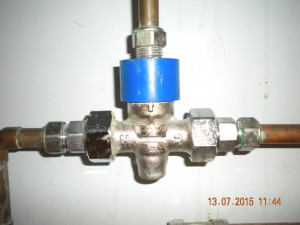 Legionella Risk Assessment
Legionella Risk Assessment
The susceptibility of residents will be determined in a Legionella Risk Assessment which will specifically show the risk of legionella infection, scalding and any measures which need to be implemented to manage risks.
Ongoing Legionella monitoring
An important step that the HSG274 Part 2 indicates is that sufficient Water sampling is conducted to identify any levels of colonisation in the recirculating water system. Specifically Legionella monitoring should be carried out when there is doubt as to the effectiveness of the control regime, or there are irregularities when temperature monitoring, or disinfectant concentrations or precautions are not being consistently achieved.
Water Sampling can determine any levels of colonisation in the water system, and exactly where this is found, whether a single inlet or more widespread within the water system. If any traces of Legionella are found, DCS will advise effective treatment and action required.
 Thermostatic Mixing Valves to eliminate the risk of scalding
Thermostatic Mixing Valves to eliminate the risk of scalding
Also within healthcare and care homes there is a high risk of scalding where the water temperature is above 44°C. Due to the elderly being recognised as vulnerable individuals, who may not be able to recognise high temperatures, testing outlet temperatures is a necessary monitoring requirement.
A Risk Assessment will help to determine the risk and advise if a TMV is required; a TMV will eliminate the risk of scalding. However, due to the ambient temperatures that a TMV generates, annual, or otherwise specified, inspection, cleaning, descaling and disinfecting is required. It is important to weigh the requirement for a TMV against the risk of Legionella.


